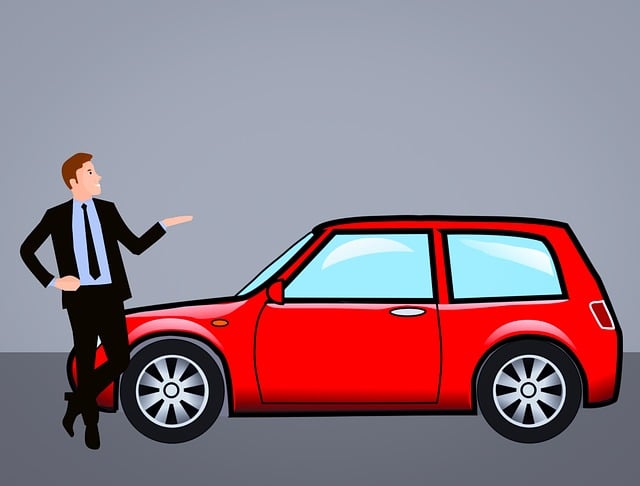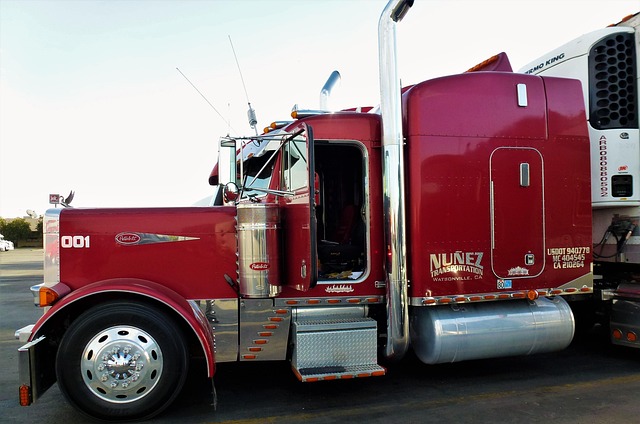Looking to register your car in California? Understanding the process can seem daunting, but we’ve broken it down step-by-step. From gathering essential documents for VIN verification to submitting applications and fees to the DMV, this guide ensures a smooth experience. Learn about the crucial requirements, frequently asked questions, and key considerations for navigating California’s car registration process, with special emphasis on accurate VIN verification.
- Understanding the California Car Registration Process
- Gathering Necessary Documents for VIN Verification
- Performing Vehicle Identification Number (VIN) Check
- Submitting Applications and Fees to the DMV
- Important Considerations and Frequently Asked Questions
Understanding the California Car Registration Process

Understanding the California Car Registration Process
In California, registering a car involves several steps that ensure vehicles on the road meet safety and environmental standards. The process begins with gathering essential documents, including proof of ownership, valid identification, and proof of insurance. Once these are in order, the next crucial step is vin verification. This involves checking the vehicle’s unique Identification Number (VIN) to confirm its authenticity and history, which can be done through a mobile vin inspection or by visiting a DMV office.
After successful vin inspection, you’ll need to pay the registration fee and any applicable taxes. The California Department of Motor Vehicles (DMV) will then issue a registration certificate and license plate. It’s crucial to keep your registration up-to-date, as late fees and potential penalties can apply if your car’s registration expires. Regularly scheduled vin verification and timely renewals are essential aspects of responsible vehicle ownership in California.
Gathering Necessary Documents for VIN Verification

Before heading to the California Department of Motor Vehicles (DMV) or a third-party service for car registration, ensure you gather all essential documents required for VIN verification. The Vehicle Identification Number (VIN) is a unique code that can be used to access your vehicle’s history and confirm its authenticity. This process is crucial for ensuring that the car you’re registering is not stolen or has any outstanding issues.
For a smooth vin verification process, especially when dealing with a mobile vin inspection or mobile vin verification service, have ready the following: your vehicle’s registration certificate (if available), proof of ownership (such as a title document), and current insurance papers. Additionally, personal identification documents like your driver’s license or passport are mandatory. Some services might also ask for a valid registration from the previous state if you’ve recently moved to California.
Performing Vehicle Identification Number (VIN) Check

Before registering your car in California, a VIN (Vehicle Identification Number) check is mandatory. This step ensures that your vehicle’s history is clear and helps prevent fraud. You can perform a VIN verification through various official channels, including the California Department of Motor Vehicles (DMV) or by utilizing a mobile vin inspection service. A mobile vin verifier can be particularly convenient as they offer on-site services, saving you time and effort.
During this process, your unique VIN number is cross-referenced with extensive databases to gather critical information about the vehicle’s past, including ownership history, accident reports, outstanding loans, or any reported thefts. This verification step plays a crucial role in ensuring that the car you’re registering is safe and legal for California roads.
Submitting Applications and Fees to the DMV

When registering your car in California, submitting applications and fees to the DMV is a straightforward process. You’ll need to complete Form DMV-123 (Vehicle Registration Application) and provide essential documents, including proof of insurance, owner’s identification, and vehicle identification number (VIN) verification. It’s crucial to ensure your VIN is accurate, which can be easily checked through a mobile vin inspection or by utilizing a trusted vin verifier.
The DMV offers both in-person and online submission options. For an in-person visit, gather all required documents and head to your nearest California DMV office. Alternatively, you can submit your forms online, but you’ll still need to mail in the necessary fees and supporting documentation. Remember, timely submission of complete applications is key to a smooth registration process.
Important Considerations and Frequently Asked Questions

Before diving into the registration process, there are several important considerations to keep in mind. First and foremost, ensuring accurate and up-to-date information is crucial. Double-check vehicle details like make, model, year, and unique identifying numbers, particularly the Vehicle Identification Number (VIN). Accurate VIN verification is a critical step that helps prevent fraud and ensures you meet California’s legal requirements. This process involves cross-referencing your car’s VIN with reliable databases to confirm its authenticity and history.
Another common query revolves around the concept of mobile VIN verifiers or vin inspections. Many residents wonder if these services, offering on-demand VIN verification, are legitimate alternatives to traditional methods. While convenient, it’s essential to consult official sources and understand the potential limitations. Some frequently asked questions include: Can a mobile vin verifier replace official documentation? What steps should I take if my car’s history raises concerns during verification? Understanding these considerations can make the registration process smoother and help avoid potential pitfalls.
Registering a car in California involves several straightforward steps, from gathering essential documents for VIN verification to submitting applications and fees to the Department of Motor Vehicles (DMV). By understanding the process and ensuring accurate vin verification, you can efficiently navigate the registration process. Remember to consider important details like insurance requirements and any applicable fees. With careful attention to these tasks, you’ll be on your way to legal and safe California driving in no time.



